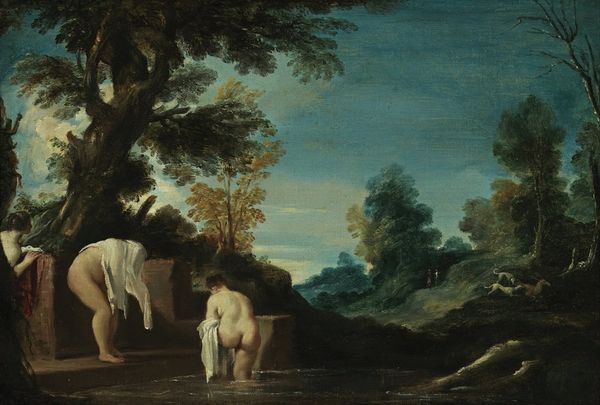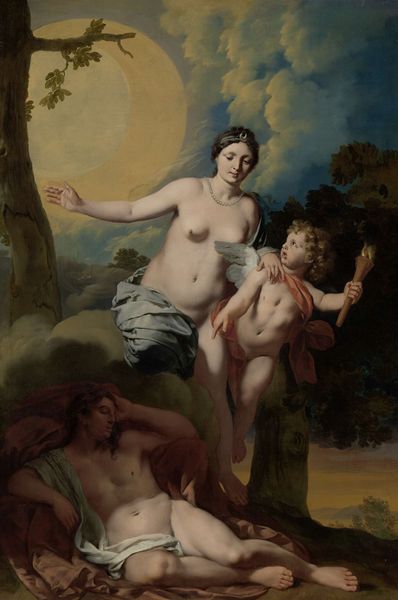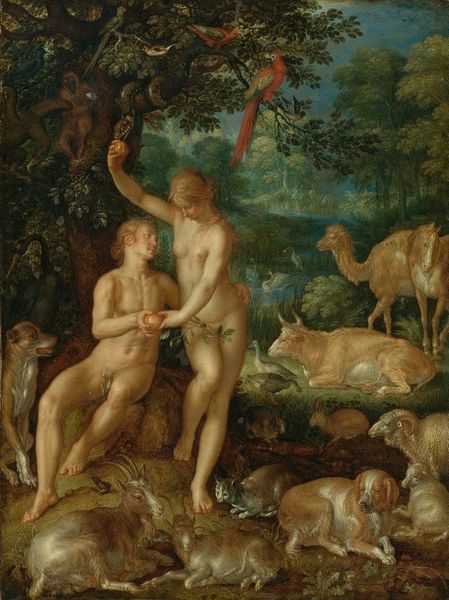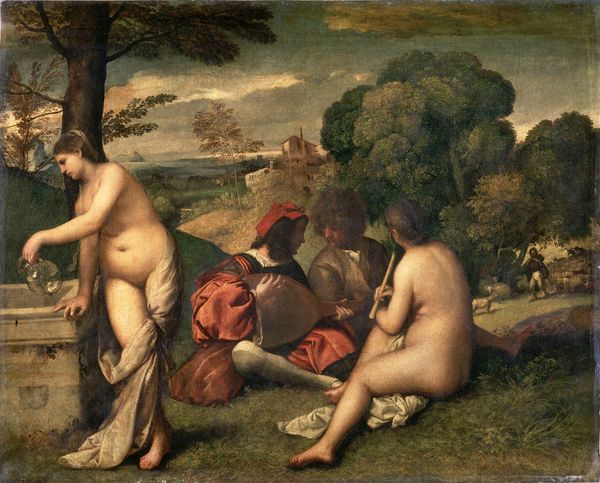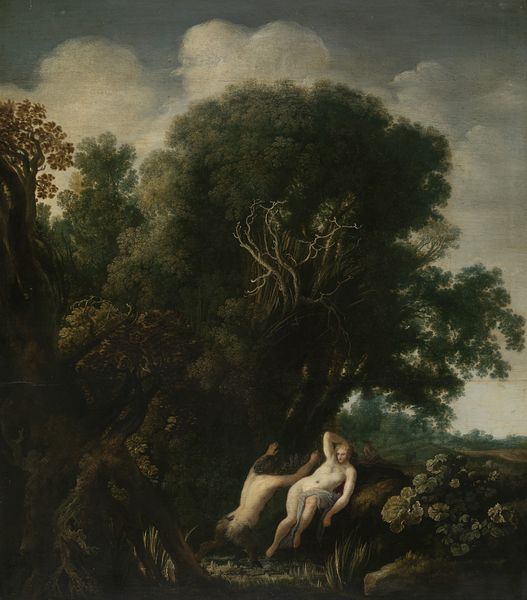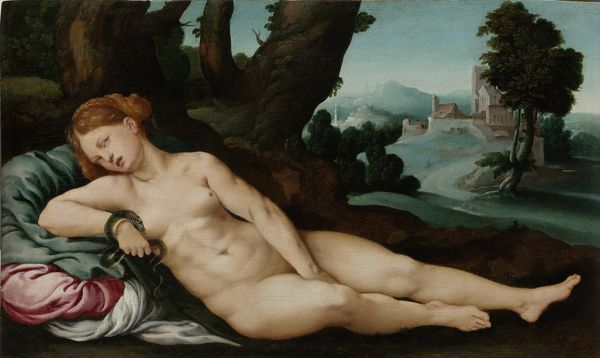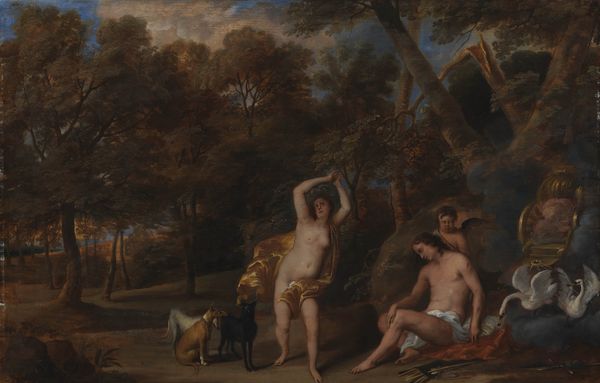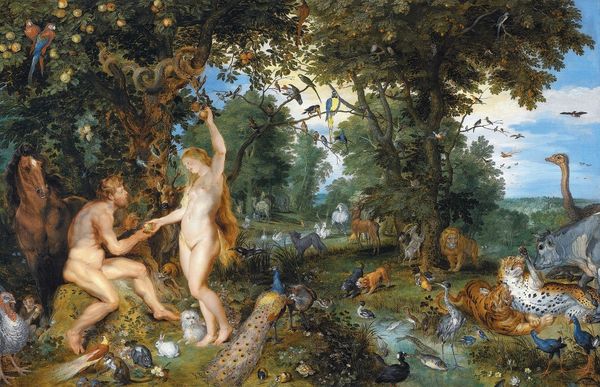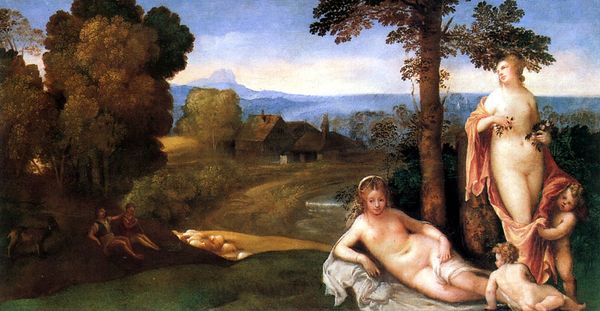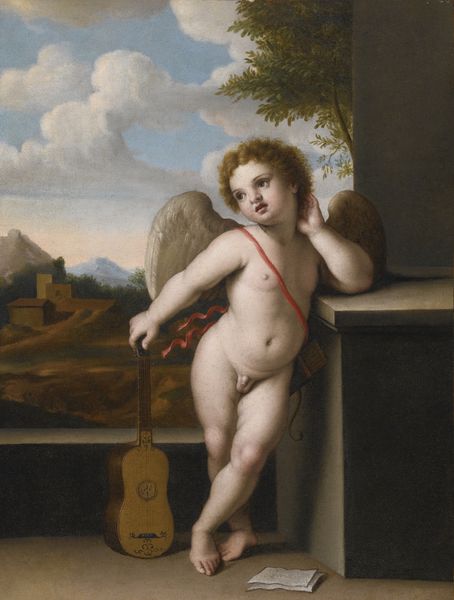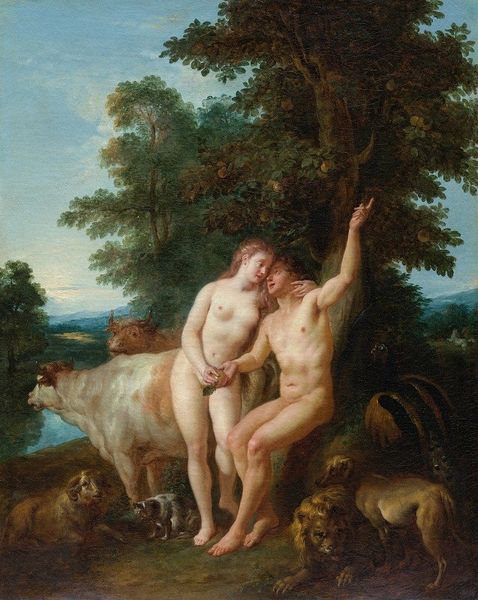
Copyright: Public domain
Curator: Here we have Dosso Dossi's "Circe and her Lovers in a Landscape," an oil painting created around 1516. The mythological scene practically glows with a peculiar serenity, doesn't it? What are your initial impressions? Editor: I'm struck by how odd, and yet inviting, this space feels. It's like stumbling upon a dream—a slightly unsettling, but beautiful dream. There's a softness, a blurriness to everything that wraps me up in it. Curator: Dossi was indeed playing with the established Venetian style, softening outlines, using richer pigments. He was based in Ferrara; his access to the Venetian school's processes likely came through trade in materials. You see how the paint itself becomes a kind of hazy filter through which we perceive the scene? Editor: Exactly. I love the way the textures almost breathe. Circe's skin looks luminous, otherworldly, and the animals have this stillness, like they’ve been paused in time. Is that deliberate, do you think, playing on the story of her transforming men into animals? Curator: Certainly. It also has implications for labor in the Venetian workshops; such textures were often a result of layered paint application completed by different hands. Think about the apprenticeship system as labor process reflected in the materials! This very scene can be found in Homer’s *Odyssey*, of course, but it’s the *making* of the scene, in the materiality of paint and panel, which fascinates me. Editor: It’s interesting you bring up that collaborative aspect of creation, because for me it mirrors something about the vulnerability of her lovers in the landscape; they are literally becoming part of the scene, surrendering agency and shape, blurred within her vision. It seems there is no struggle here. Curator: Very true. Her power isn't violent, but rather absorptive. Think too of the availability of particular pigments at this moment in Renaissance Italy, and how such color impacted perceptions of her desirability and her influence within Ferrara's upper class. Editor: Well, whatever the materials, whatever the intention, I feel transported. The artist really did weave a kind of spell, one that’s made of light, color, and of course, transformation. Curator: And, materially speaking, this transportation involved global networks of trade and skill. Always important to consider the labor that brings such works into being! Editor: Right. Thank you, as always, for keeping us grounded in the reality of art, while allowing for moments of pure wonder.
Comments
No comments
Be the first to comment and join the conversation on the ultimate creative platform.
